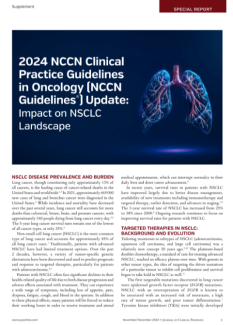Cyclin D1 Quantification May Improve Prognostic Assessment in Mantle Cell Lymphoma
Higher Cyclin D1 protein levels detected through a novel quantification method correlate with better survival outcomes in patients with mantle cell lymphoma (MCL), highlighting its prognostic ability, according to a study published in Diagnostic Pathology.
Using a novel quantitative dot blot (QDB) technique, researchers analyzed Cyclin D1 protein levels in 120 formalin-fixed paraffin-embedded (FFPE) MCL samples, aiming to establish its prognostic significance.
“This study aims to detect Cyclin D1 protein in 120 FFPE samples from MCL patients using the QDB technique, analyze and evaluate the predictive value of Cyclin D1 protein for the prognosis of MCL patients, investigate its correlation with other clinical parameters, and explore its potential as a new molecular biomarker for prognostic assessment and clinical treatment decision-making in MCL,” explained Yan Yang, Departments of Pathology, Affiliated Yantai Yuhuangding Hospital, Qingdao University, in Yantai, China, and coauthors.
MCL is a rare subtype of non-Hodgkin lymphoma, accounting for 3% to 10% of cases, and is characterized by the chromosomal translocation (11;14), leading to Cyclin D1 overexpression. While this biomarker is widely recognized for its role in tumor progression, its prognostic implications in MCL remain unclear.
The researchers followed 72 patients with MCL over a median period of 48 months, with an overall survival (OS) rate of 31.9% at 3 years and 13.9% at 5 years. The median survival time was 24 months. Using statistical modeling, researchers identified 0.46 nmol/g as the optimal Cyclin D1 cut-off value for OS analysis. Patients with Cyclin D1 levels above this threshold had significantly better survival outcomes (P =.017), with longer median survival times than those with lower levels.
Further analysis revealed a significant correlation between Cyclin D1 quantification and patient prognosis. However, no significant associations were found between Cyclin D1 levels and clinicopathological parameters such as age, gender, lactate dehydrogenase (LDH) levels, or prognostic indices such as the Mantle Cell Lymphoma International Prognostic Index (MIPI) and Ann Arbor stage (AAS). Additionally, Cyclin D1 levels did not correlate with the Ki-67 proliferation index, suggesting that these biomarkers may serve distinct roles in MCL pathology.
While univariate analysis indicated that Cyclin D1, age, Ki-67, and MIPI were associated with patient prognosis, multivariate analysis did not identify any independent prognostic factors.
“This article represents the first attempt to apply QDB technology in clinical lymphoma research, focusing solely on the fully quantitative study of CyclinD1 protein, which has significant diagnostic value in mantle cell lymphoma,” concluded the study authors.
Reference
Yang Y, Song L, Yin Y, et al. Clinical significance of Cyclin D1 by complete quantification detection in mantle cell lymphoma: positive indicator in prognosis. Diagn Pathol. 2024;19(1):149. doi:10.1186/s13000-024-01577-z

















